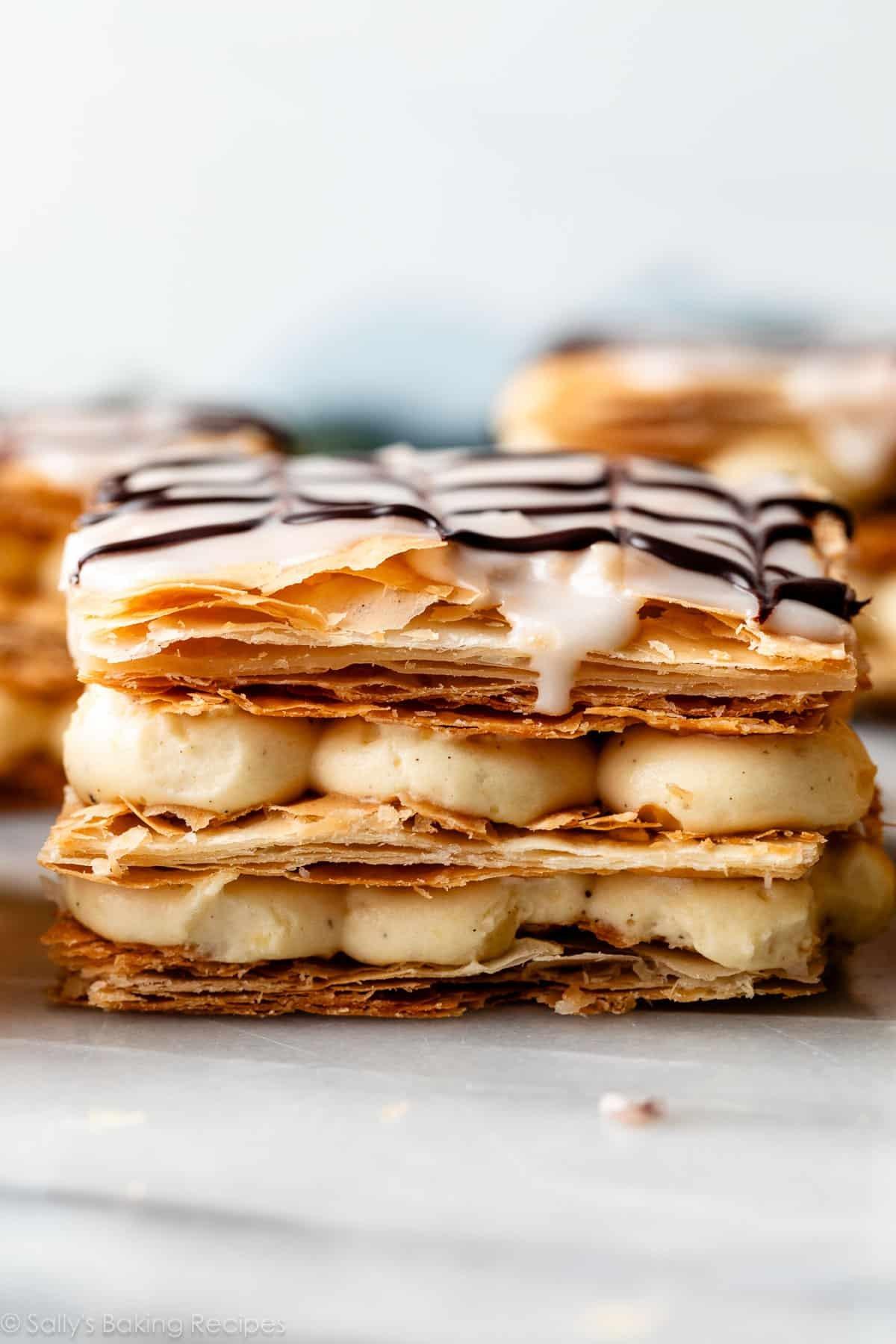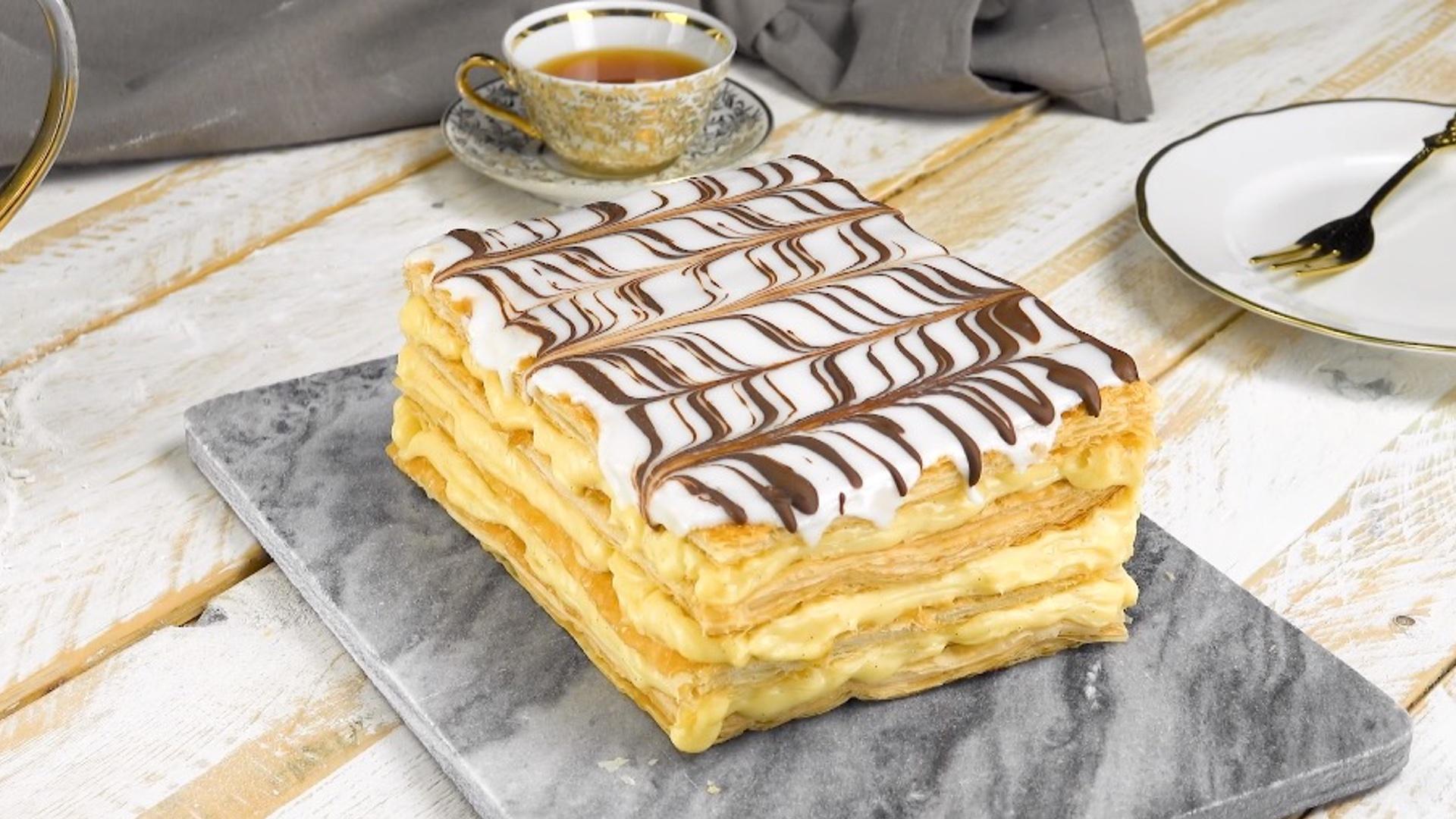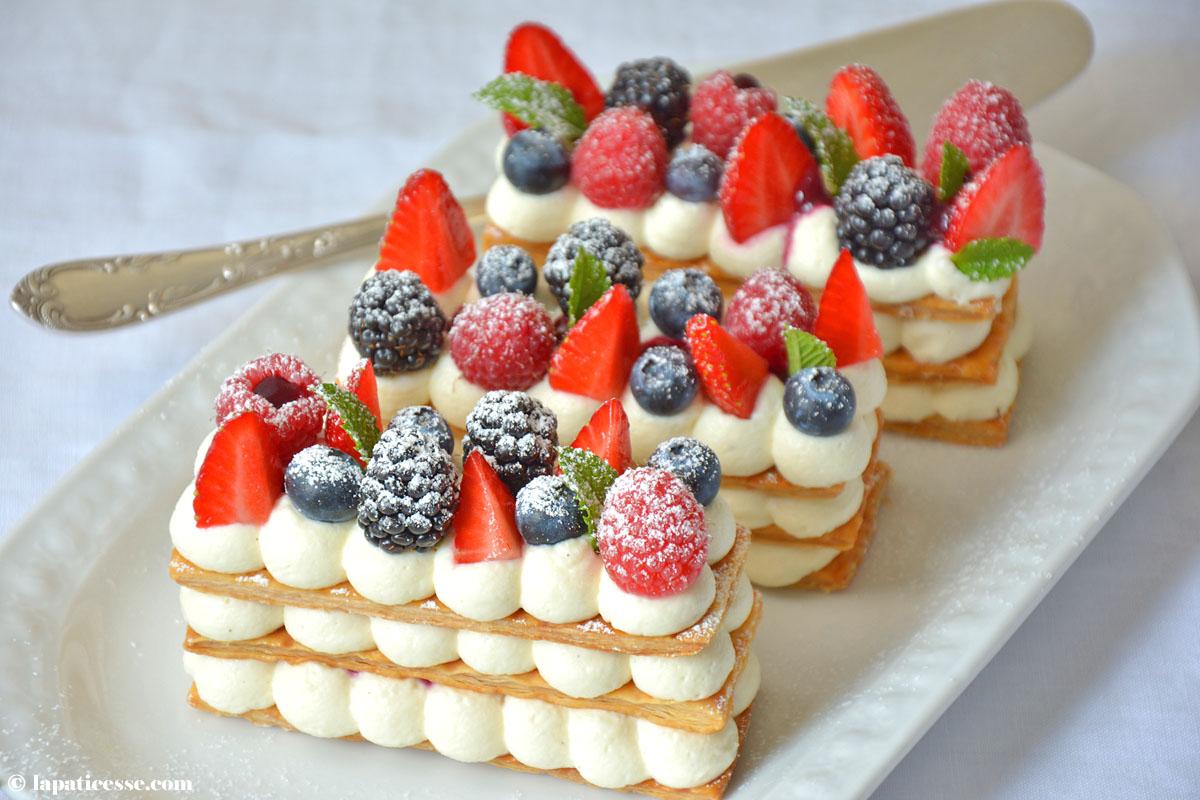In the realm of culinary delights, few pastries evoke the same sense of admiration and intrigue as the mille-feuille.With its delicate layers of flaky puff pastry, sweet cream, and often a delicate touch of fruit or glaze, this French classic has captivated palates and inspired pastry chefs for generations. as we embark on a journey to explore the art of mille-feuille, we uncover not only the techniques and traditions that bring this iconic dessert to life but also the rich history and cultural significance that underlie its creation. From the careful folding of dough to the intricate assembly of its components, crafting a mille-feuille is as much about artistry as it is indeed about flavour. join us as we delve into the secrets behind this timeless treat, celebrating the craftsmanship that transforms simple ingredients into a symphony of taste and texture.
Understanding the Structure: The Anatomy of Mille-Feuille
The mille-feuille, or “thousand layers,” is a pastry marvel that captivates both the eyes and the palate. Its structure consists of thin, delicate layers of puff pastry, alternating with smooth, rich cream fillings often made from either pastry cream or whipped cream. Each pastry layer is baked to a perfect golden hue, providing a delightful crunch that contrasts beautifully with the creamy interior. The craftsmanship involved in creating the layers is meticulous; each sheet of pastry must be rolled, folded, and chilled repeatedly to achieve that signature flakiness that defines this French classic.
Along with the pastry and cream, the mille-feuille is often adorned with a refined finish. A glistening glaze of fondant may grace the top, often featuring a marbled pattern of chocolate icing for an elegant touch. To enhance the flavors and textures, one might also encounter variations that incorporate seasonal fruits or flavored syrups.The result is not merely a dessert but a work of art that entices the senses with its contrast of textures and harmony of flavors.Below is a brief overview of the key components that make up this enchanting dessert:
| Layer Type | Description |
|---|---|
| Puff Pastry | Light, flaky layers providing structure. |
| Pastry Cream | Creamy filling, rich and smooth. |
| Glaze | Sleek finish for visual appeal. |

Crafting Perfection: Techniques for Creating Flaky Layers
The journey to achieving the iconic flaky layers of Mille-Feuille begins with the perfect technique for preparing the pâte feuilletée, or puff pastry. The magic lies in the process of creating alternating layers of dough and butter, wich puff up beautifully during baking. To master this art, consider these essential methods:
- Chill, Don’t Rush: Cold ingredients are crucial; keep both the butter and dough chill to prevent the butter from melting into the dough.
- Fold with Care: The classic book proposal is to perform a “turn” or fold, which creates layers. Aim for at least six folds to maximize the flakiness.
- Dough Relaxation: After each folding session, let the dough rest in the fridge for about 30 minutes to 1 hour. This relaxes the gluten and helps maintain the structure when baked.
Another important aspect in this intricate process is the baking technique.Achieving the right temperature and using methods to maintain even heat distribution will ensure a beautiful, golden finish. Here’s a simple guide to perfecting your bake:
| Step | Temperature | Duration |
|---|---|---|
| Preheat oven | 400°F (200°C) | N/A |
| Bake for puffing | 425°F (220°C) | 15 minutes |
| Reduce temperature | 375°F (190°C) | 20-25 minutes |
By mastering these techniques, you can create the perfectly flaky layers that define the Mille-Feuille, ensuring each bite is a delightful experience that embodies the essence of French pastry artistry.

Flavor Harmony: Filling Choices That Elevate Your Mille-Feuille
When it comes to creating a stunning mille-feuille, the choice of filling can make all the difference in achieving the perfect balance of flavor and texture. Customary options like pastry cream and vanilla custard are always favorites, but daring bakers can elevate their creations by experimenting with unique combinations. Consider infusing your fillings with exciting flavors such as:
- Pistachio for a nutty twist
- Rosewater to impart a floral note
- Matcha for a vibrant and earthy depth
- Chocolate Ganache for the ultimate indulgence
complementing your filling with contrasting textures is essential for a truly satisfying mille-feuille experience. Think of incorporating crunchy praline or fresh fruit layers that offer a burst of freshness and acidity, providing a counterpoint to the creaminess of the filling. A well-crafted combination might include:
| Filling | Texture Enhancement |
|---|---|
| Vanilla Custard | Caramelized Almonds |
| Pistachio Cream | Butter Biscuit Crumbles |
| Raspberry Jam | Crumble Topping |
these harmonious layers not only tantalize the taste buds but also create an engaging visual feast that will impress your guests. Embrace the art of layering by daring to mix and match different fillings and textures to craft your signature mille-feuille masterpiece.

Presentation Matters: Tips for Serving and Enjoying This Classic Pastry
When it comes to serving and enjoying a mille-feuille, presentation is key to captivating your guests. The classic layers of puff pastry, cream, and fondant demand a careful touch for an enticing display. Consider using a sharp knife to portion the pastry into neat squares or rectangles, ensuring that the layers remain intact. Plating is equally important—opt for elegant plates and consider a drizzle of fruit coulis or chocolate sauce for added color and flavor. To elevate the experience, you can add edible flowers or a dusting of powdered sugar to enhance the visual appeal. Here are some tips for an impeccable presentation:
- Keep it Clean: Wipe the edges of the plate for a polished final touch.
- contrast Colors: Use plates that contrast with the dessert to make it pop.
- Layering Style: Showcase the layers by placing a single piece on a contrasting dish.
As for enjoying this delightful treat, consider pairing it with a refreshing drink to complement the richness of the pastry. A cup of espresso or a fruity herbal tea can balance the sweetness of the mille-feuille beautifully. When indulging, take small bites to appreciate the textures of flaky pastry and smooth cream. To further enhance the experience, you could create a simple tasting guide:
| Drink Pairing | Taste Profile |
|---|---|
| Espresso | Bold and Robust |
| Herbal Tea | Refreshing with a Hint of Sweetness |
| Sparkling Water | Crisp and Cleansing |
Wrapping Up
As we conclude our exploration of the exquisite mille-feuille, we find ourselves at the intersection of art and culinary craftsmanship. This iconic French pastry, with its delicate layers and symphony of textures, invites us into a world where patience and precision reign. Each bite reveals the thoughtful interplay between the buttery, flaky pastry and the luscious cream, offering a delightful reminder that sometimes the most remarkable experiences come from the simplest ingredients layered together with love and skill.The mille-feuille is more than just dessert; it is a party of tradition,creativity,and the joy of indulging in something beautiful. Whether you’re savoring it in a quaint Parisian café or attempting your own rendition at home, the essence of this pastry lies in the moments it creates. So, as you venture into your next culinary journey, remember to embrace the layers—both in your dishes and in your experiences—because, like mille-feuille, life is made richer and more complex by the beautiful layers we build. Bon appétit!